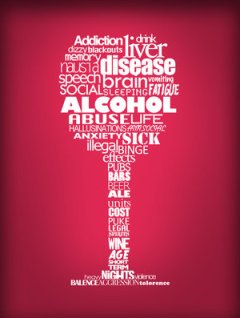 Excessive alcohol use continues to be a drain on the American economy, according to a study released by the Centers for Disease Control and Prevention (CDC). Excessive drinking cost the U.S. $249 billion in 2010, or $2.05 per drink, a significant increase from $223.5 billion, or $1.90 per drink, in 2006. Most of these costs were due to reduced workplace productivity, crime, and the cost of treating people for health problems caused by excessive drinking.
Excessive alcohol use continues to be a drain on the American economy, according to a study released by the Centers for Disease Control and Prevention (CDC). Excessive drinking cost the U.S. $249 billion in 2010, or $2.05 per drink, a significant increase from $223.5 billion, or $1.90 per drink, in 2006. Most of these costs were due to reduced workplace productivity, crime, and the cost of treating people for health problems caused by excessive drinking.
Binge drinking, defined as drinking five or more drinks on one occasion for men or four or more drinks on one occasion for women, was responsible for most of these costs (77 percent). Two of every 5 dollars of costs — over $100 billion — were paid by governments.
“The increase in the costs of excessive drinking from 2006 to 2010 is concerning, particularly given the severe economic recession that occurred during these years,” said Robert Brewer, M.D., M.S.P.H., head of CDC’s Alcohol Program and one of the study’s authors. “Effective prevention strategies can reduce excessive drinking and related costs in states and communities, but they are under used.”
Excessive alcohol consumption is responsible for an average of 88,000 deaths each year, including 1 in 10 deaths among working-age Americans ages 20-64.
Excessive alcohol use cost states and the District of Columbia a median of $3.5 billion in 2010, ranging from $488 million in North Dakota to $35 billion in California. Washington D.C. had the highest cost per person ($1,526, compared to the $807 national average), and New Mexico had the highest cost per drink ($2.77, compared to the $2.05 national average).
The 2010 cost estimates were based on changes in the occurrence of alcohol-related problems and the cost of paying for them since 2006. Even so, the researchers believe that the study underestimates the cost of excessive drinking because information on alcohol is often underreported or unavailable, and the study did not include other costs, such as pain and suffering due to alcohol-attributable harms.
Elsevier. “Excessive alcohol use continues to be drain on American economy.” ScienceDaily. ScienceDaily, 16 October 2015. <www.sciencedaily.com/releases/2015/10/151016084843.htm>.
Related Online CEU Courses:
Codependency: Causes, Consequences and Cures is a 3-hour online CEU course that offers strategies for therapists to use in working with clients who present with the characteristic behavior patterns of codependency.
Improving Cultural Competence in Substance Abuse Treatment is a 4-hour online continuing education (CE/CEU) course that proposes strategies to engage clients of diverse racial and ethnic groups in treatment.
Managing Chronic Pain in Adults With or in Recovery from Substance Use Disorders is a 5-hour online CEU course that explains the close connections between the neurobiology of pain and addiction, assessments for both pain and addiction, procedures for treatment of chronic pain management, side effects and symptoms of tolerance and withdrawal from pain medication, managing risk of addiction to pain medication and nonadherence to treatment protocols, maintaining patient relationships, documentation, and safety issues.
Developmental Effects of Alcohol is a 4-hour online CEU course that focuses on the impact of alcohol on the development of children and youth from birth through 20.
Assessing Substance Abuse in Patients with Chronic Pain is a 3-hour online CEU course that will demystify the diagnosis and treatment of chronic pain, the role and limitations of pain medications, and how to identify when pain relieving drugs may be harmful to clients.
—
Professional Development Resources is approved by the American Psychological Association (APA) to sponsor continuing education for psychologists. Professional Development Resources maintains responsibility for all programs and content. Professional Development Resources is also approved by the National Board of Certified Counselors (NBCC); the Association of Social Work Boards (ASWB); the American Occupational Therapy Association (AOTA); the American Speech-Language-Hearing Association (ASHA); the Commission on Dietetic Registration (CDR); the Alabama State Board of Occupational Therapy; the Florida Boards of Social Work, Mental Health Counseling and Marriage and Family Therapy, Psychology & School Psychology, Dietetics & Nutrition, Speech-Language Pathology and Audiology, and Occupational Therapy Practice; the Ohio Counselor, Social Worker & MFT Board and Board of Speech-Language Pathology and Audiology; the South Carolina Board of Professional Counselors & MFTs; and by the Texas Board of Examiners of Marriage & Family Therapists and State Board of Social Worker Examiners.




